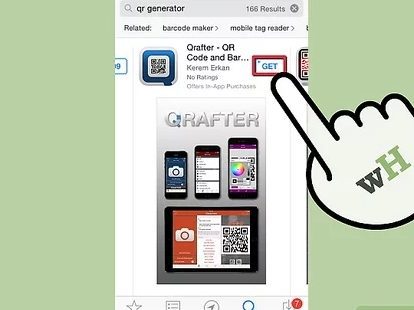Want to create a cool, functional QR code for your business or personal use? Don’t worry, it’s a snap! Here’s a quick guide to follow:
What do you want your QR code to link to? Your website? A message? Contact info? Decide on the content first.
A quick online search will reveal many free QR code generators. Pick one that suits your needs.
This step requires simply copying and pasting your content into the generator.
Most generators let you customize the appearance of the code, so play around with options like color, size, and shape for a stand-out code.
When you’re happy with the code, download it as an image file to integrate it with your business or brand.
That’s it! With just these five easy steps, you can create a unique and engaging QR code in no time.
Understanding QR Codes
A QR (Quick Response) code is a two-dimensional barcode that can store information, such as a website URL, phone number, or email address. QR codes were invented in 1994 by Denso Wave, a subsidiary of Toyota, but have become more popular in recent years. The codes can be scanned using a smartphone or tablet with a built-in camera and a QR code reader app. The code consists of black and white squares arranged in a specific pattern that encodes the data.
QR codes can be used for a variety of purposes, such as advertising, marketing, inventory tracking, and payment processing. In addition, QR codes can be customized with logos or images to create a unique design that catches the eyes of consumers. They are also adaptable to various sizes and applications, making them useful for business owners in different industries.
Benefits of QR Codes
QR codes offer several advantages for both businesses and consumers. Some of the key benefits of QR codes include:
· Increased convenience: QR codes enable customers to quickly access important information with their smartphones, such as a website URL, promotions, or product details.
· Enhanced engagement: QR codes can be used to create interactive experiences for consumers, such as games or quizzes, that increase engagement and brand awareness.
· Improved tracking and analytics: QR codes can be used to track customer behavior, such as how many times the code was scanned or which product was most popular, providing valuable insights.
· Cost-effective: Creating and printing QR codes is relatively inexpensive, compared to other forms of advertising and marketing.
QR Code Generators
There are many online QR code generators available, which allow businesses and individuals to create custom codes for free. Some of the most popular QR code generators include:
· QR Code Generator: This tool offers several customization options, such as color and logo, and allows users to create QR codes for various types of data.
· Unitag: Unitag enables users to create QR codes with custom designs, such as gradients and frames, and provides analytics and tracking features.
· Kaywa: Kaywa is a simple QR code generator that allows users to create codes for URLs, text, and phone numbers.
Creating a QR Code
To create a QR code, follow these basic steps:
1. Choose a QR code generator: Select an online QR code generator that suits your needs.
2. Enter the data: Type in the data you want to encode, such as a website URL or promotional message.
3. Customize the code: Choose any customization options, such as color or logo, to make the code stand out.
4. Download the code: Once you are satisfied with the code, download it and use it in your marketing campaigns.
Personalizing QR Codes
Personalizing QR codes can help businesses to distinguish themselves from their competitors and increase brand recognition. To personalize a QR code, consider the following tips:
· Add a logo: Use your business logo as the center icon of the QR code to create a unique design that stands out.
· Choose bright colors: Select vibrant colors that match your brand to create an eye-catching design.
· Provide clear instructions: Make sure to include instructions on how to scan the code and what information the code contains.
Best Practices for QR Codes
To ensure that your QR codes are effective, follow these best practices:
· Keep it simple: Avoid adding too much information to the code, as it can make it difficult to scan and read.
· Test the code: Make sure to test the code before using it in your marketing campaigns to ensure that it is scannable and contains the right information.
· Place the code strategically: Put the code in a visible location, such as on a product label or a store window, where customers can easily scan it.
Testing and Verification of QR Codes
After creating a QR code, it is important to test and verify it to ensure that it works properly. Some of the steps you can take include:
· Scan the code: Use a QR code reader app to scan the code and make sure that it leads to the correct website or information.
· Test the code in different environments: Try scanning the code in different lighting conditions and on various devices to ensure that it works correctly.
· Verify the code’s effectiveness: Use analytics and tracking features to monitor the number of scans and the user engagement, and adjust the code accordingly.





